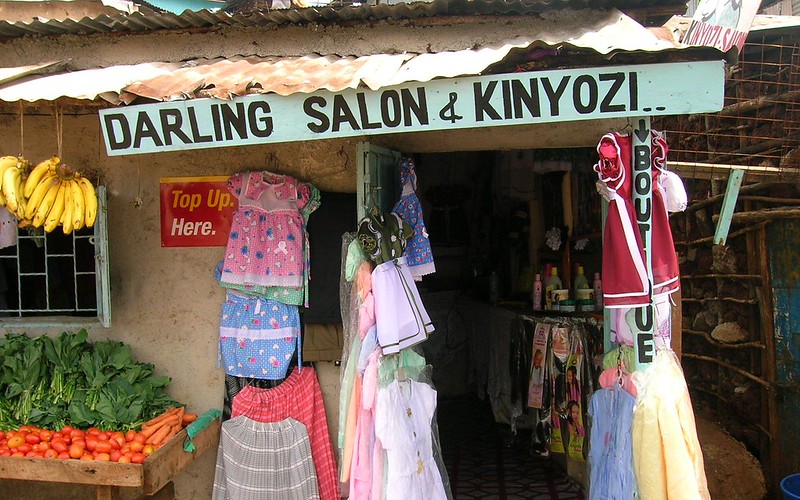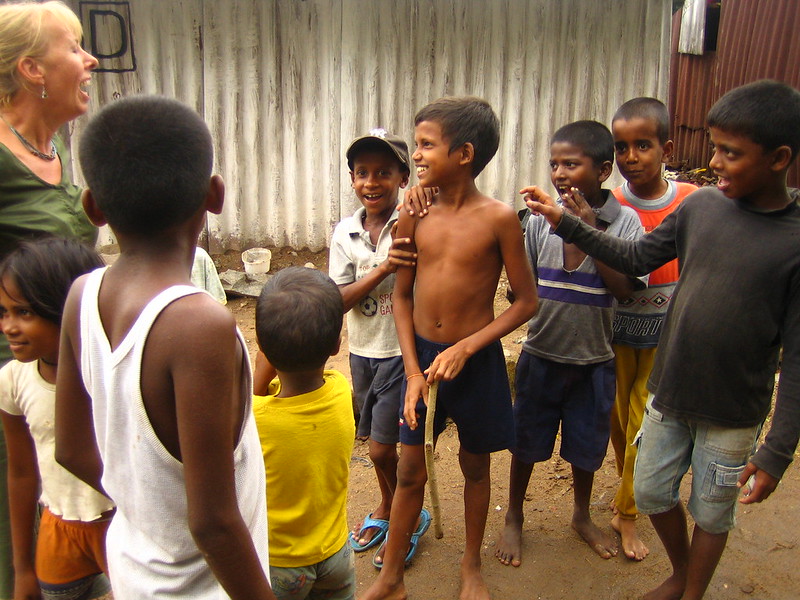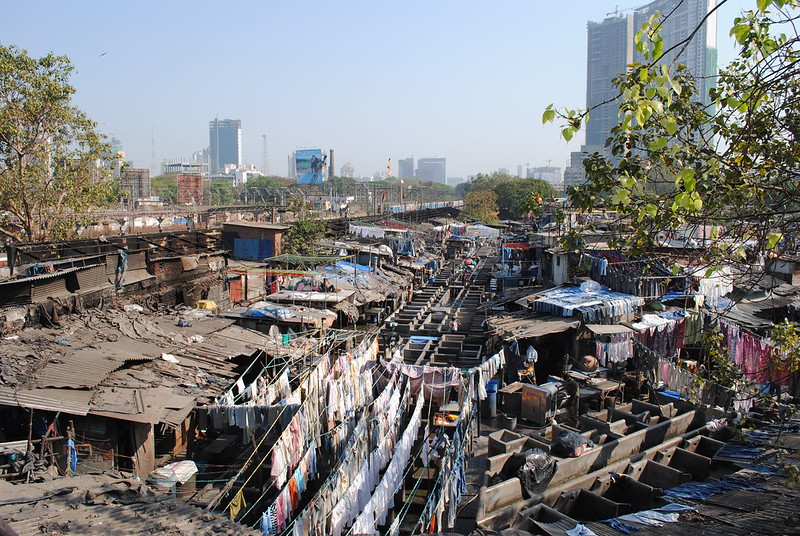18-10-2020
Impacts of slum tourism on the host community
Alejandra López | Alba SudThe tourism sector is currently going through an interruption, which brings the opportunity to understand and rethink some of its expressions. An example could be slum tourism, a phenomenon that was growing in popularity before the pandemic and that has been exposed to a wide variety of opinions and controversies.

Slum tourism can be understood as a “form of tourism that has poverty as its main attraction” (Frenzel, cited at Frenzel, Koens, Steinbrink & Rogerson, 2015). Nevertheless, there is no agreed definition about this phenomenon or even about the concept of ‘slum’, since it is subjected to a variety of geographic and socio-spatial contexts (Diekman & Hannan, cited at Privitera, 2015). It often includes different concepts under the same umbrella, such as the South African townships, the favelas from Brazil, or the Turkish gecekondus. Moreover, it is necessary to consider the complexity when defining these spaces, not only because of their differences regarding their ubication but also due to their multifaceted, diverse and constantly changing character.
The slumming phenomenon has its origins in the Victorian London, around the beginning of the 19th Century, when interest in poverty and philanthropy among the upper classes emerged, making it popular to visit the neighbourhood of East End. Later they started to travel to other countries in the Global North, especially to the United States, often with the intention of comparing the destination’s poverty with the one at their place of precedence (Frenzel et al., 2015). Nowadays we can still find cases of slum tourism in cities in the Global North, as in the case of tours guided by homeless people, but it is at countries of the Global South where the focus is set, by both the Academia and the media. Some destinations stand out among others, such as South Africa, Brazil, India and Kenya.
This tourism practice generally consists of carrying out tours by bus, car, bicycle or by foot through spaces that are associated with a level of relative poverty. These are often informal settlements formed by shanties at the suburbia areas of big cities around the world. In addition, these kinds of territories are usually subjected to prejudices and stigma linked to crime, violence or lack of hygiene, which can be an obstacle when creating tourism initiatives or when keeping commercial relationships with other exterior agents (Fernandes, Mason & Chakrabarti, 2019).
Slum tourism can be considered as part of a group of new post Fordist tourism forms, in which the tourist wants to escape from the overcrowded destinations and activities and look for unconventional experiences, such as voluntourism or necrotourism. In many cases, these forms are questioned regarding ethical and moral issues, such as the use of poverty or suffering and death to create a tourism attraction. In the same way, slum tourism is also defended for the positive effects it causes to the territory and the local community.
The positive impacts of slum tourism for the local community
Among this type of effect, those of economic and developmental character stand out (Frenzel et al., 2015) and they can be provided in different ways. One is through the direct donation of money by the tourists to the community or also by allocating a percentage of the tour’s price to them. The tour operators are, in many cases, the ones that create initiatives to generate economic or developmental aids, sometimes they even found charity organizations dedicated to the improvement of the area. On the other hand, the tours often allow the visitants to stop at local shops, handcraft workshops, or organize meals at restaurants, providing thus income for the small businesses at the community. The creation of employment is also considered as a benefit from tourism to the slum population (Agus & Indra, 2018; Ding, cited at Auala, van Zyl & Ferreira, 2019; Frenzel et al., 2015; Frenzel, 2017; Giddy & Hoogendoorn, 2018).
 .
.
Local commerce in Nairobi, Kenya. Source Antonella Sinopoli, under creative commons license.
From this argument around the income increase for the area, slum tourism is questioned as a possible tool for poverty reduction at slum spaces. For this reason, several slum tourism initiatives emerge as part of projects by the government or by other organizations for the territory’s development and the improvement of the economic situation (Frenzel et al., 2015; Frenzel, 2017). Another positive effect is the possibility to change the prejudices associated with slums (Agus e Indra, 2018), showing their reality and focusing on some relevant aspects that allow creating a new narrative around certain places. This could be done, for example, showing the resourcefulness of residents to keep their livelihoods, the hard work they carry out, or the community and hospitality feeling they have.
Furthermore, the fact that tourists show interest and decide to perform their tourist activity at their home is usually a cause of pride among residents (Frenzel et al., 2015), since they often find themselves in a marginalized situation – politically, economically and socially – from the rest of the city, where it is difficult to find locals that want to maintain a relationship with the slum.
The negative impacts of slum tourism for the local community
When we take a look at the total of impacts caused by this form of tourism at a slum territory, we can see that the great majority befall on the local population. This fact is interesting if considering that one of the motives why visitants move to this kind of destination is to help its inhabitants and their surroundings. One of the effects that stand out the most is the existence of several exploitation cases in this type of tourism practices, which can happen by the tour operator to the guides working for them as well as by the guides themselves to the local community and their businesses (Koens & Thomas, 2016).
Another argument about exploitation is related to the limited evidence of local residents perceiving an economic return from the tours and, if they do, these are usually very scarce. In addition, it is common to find differences among the benefits received by different members of the same community, the aspect to which issues of class, ethnicity, or sociocultural contexts are emerged. Those can play an important role at the business and tourism income distribution, increasing the existent inequalities among groups or communities inside one slum (Koens & Thomas, 2016). This aspect disagrees with the argument that presents the slum tourism as a tool for poverty reduction, or it even stops considering the employment and economic income creation as positive effects.
The class and racial issues are not only identified among residents but also between them and the visitants, who in a lot of cases come from countries in the Global North, such as the USA, Canada or Germany. This aspect is primarily criticized because of the fact that people who enjoy a privileged socioeconomic position go visit those areas that are less advantaged, as a form of reinforcement of the superiority of their circumstances or even as a way to alleviate certain moral burden related to “other’s” poverty, especially when they find out about their living conditions and, to their eyes, they are much more positive than they expected.

A tourist with local children at a slum in Sri Lanka. Source: Aidan Jones, under creative commons license.
Another outstanding effect in the community is the possible perpetuation of the stereotypes and prejudices associated with certain territories (Frenzel et al., 2015). Although in several cases the tourists have perceived a change on their perception about the visited place, in other cases the narrative might keep these stigmas, often caused by the need to satisfy the visitor’s expectations, who has already received a previous image about the destination where the tour will take place.
The following negative impact is linked to the attitude presented by the tour participants since sometimes the residents perceive rude behaviours from them or they feel that they violate their privacy, especially when taking pictures of the residents without any permission (Nisbett, 2017). Moreover, many slum spaces are usually formed by narrow alleys surrounded by houses, making it easy to observe the people who live inside.
Finally, another possible effect of tourism in a slum territory is the gentrification (Frenzel et al., 2015), since the zone’s development can lead to the displacement of the original inhabitants, who cannot afford living there; or the services offered there might be highly addressed to tourism and not satisfy the resident’s needs. This way, this practice would stop being useful as a tool for poverty reduction and the only thing it would do would be to distribute it among other parts of the city.
Existent controversy around slum tourism
Parting from this contraposition of effects that tourism cause to the host community at favelas, slums, townships, etc., we can understand better one of the most recurrent topics when talking about this phenomenon: the existing controversy around it and the moral dilemma present at this activity’s practice. This can be observed in a wide diversity of articles and reports, such as ‘Slum tourism: how it began, the impact it has, and why it became so popular’, published by Forbes. It makes an introduction about the topic and it presents it as a very polarized debate. El País also shows this polemic with ‘Dharavi: el gueto que noqueó al Taj Mahal’, reflecting on the growth in tourists and the popularity of slum tourism. With ‘Turismo slum - ¿es ético?’, published by Travindy, they interview Elisa Spampinato, who discusses about moral questions that surround this tourism practice, the contradictions between discourses, and the complexity of this reality.

Slum in Bombay. Source: Sara Jamerson under creative commons license.
In general terms, this controversy can be understood by the contraposition of two different narratives. One keeps a more positive view about slum tourism, focusing on the benefits and the possibilities of community development and poverty reduction at slums. In addition, its philanthropic and educational character is highlighted, since it represents a window to an unknown reality that we get very few information about. The other narrative questions the use of people’s poverty situation as a commodity, especially with the objective of making tourist enjoy or live a new experience. On the other hand, the voyeuristic and degrading character of this practice is also highlighted, making comparisons with zoos, safaris, violence shows or ‘poverty porn’.
Other factors contributing to this debate are the exploitation cases at the community that has been previously commented on, emphasizing the lack of participation of local residents in both the development of the tourism activities and their decision-making and design. Moreover, in many cases it is considered more ethical when the local population and the visitants have the opportunity to interact with each other (Auala et al., 2019).
As it is seen, slum tourism is presented as a highly complex phenomenon due to a variety of reasons. When talking about it, it is necessary to take into account many factors that form it, influence it and that create differences and similarities between some initiatives and others. In addition to this, it is necessary to highlight the necessity to keep doing research about this topic and its implications on the territory.
More Articles
-
Borja Suárez: “Vamos a la huelga general de hostelería en Santa Cruz de Tenerife”
General News | 17-04-2025 -
¿Turismo en el Parque Agrario de la Conca d’Òdena? Conocer para poder valorar
General News | 15-04-2025 -
Jornadas de mapeo: turismo, memorias y archivos
General News | 10-04-2025 -
Turistificación y malestares laborales: algo de memoria y futuro del sindicalismo en hostelería
General News | 08-04-2025 -
5º Seminario Perspectivas críticas sobre el trabajo en el turismo
General News | 25-03-2025
